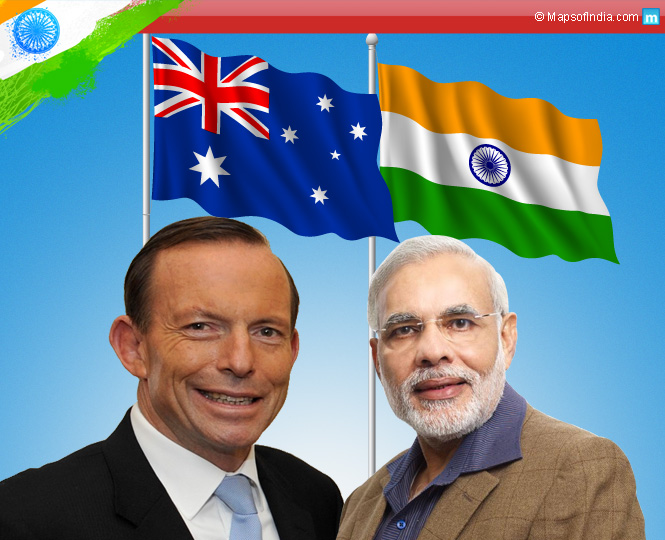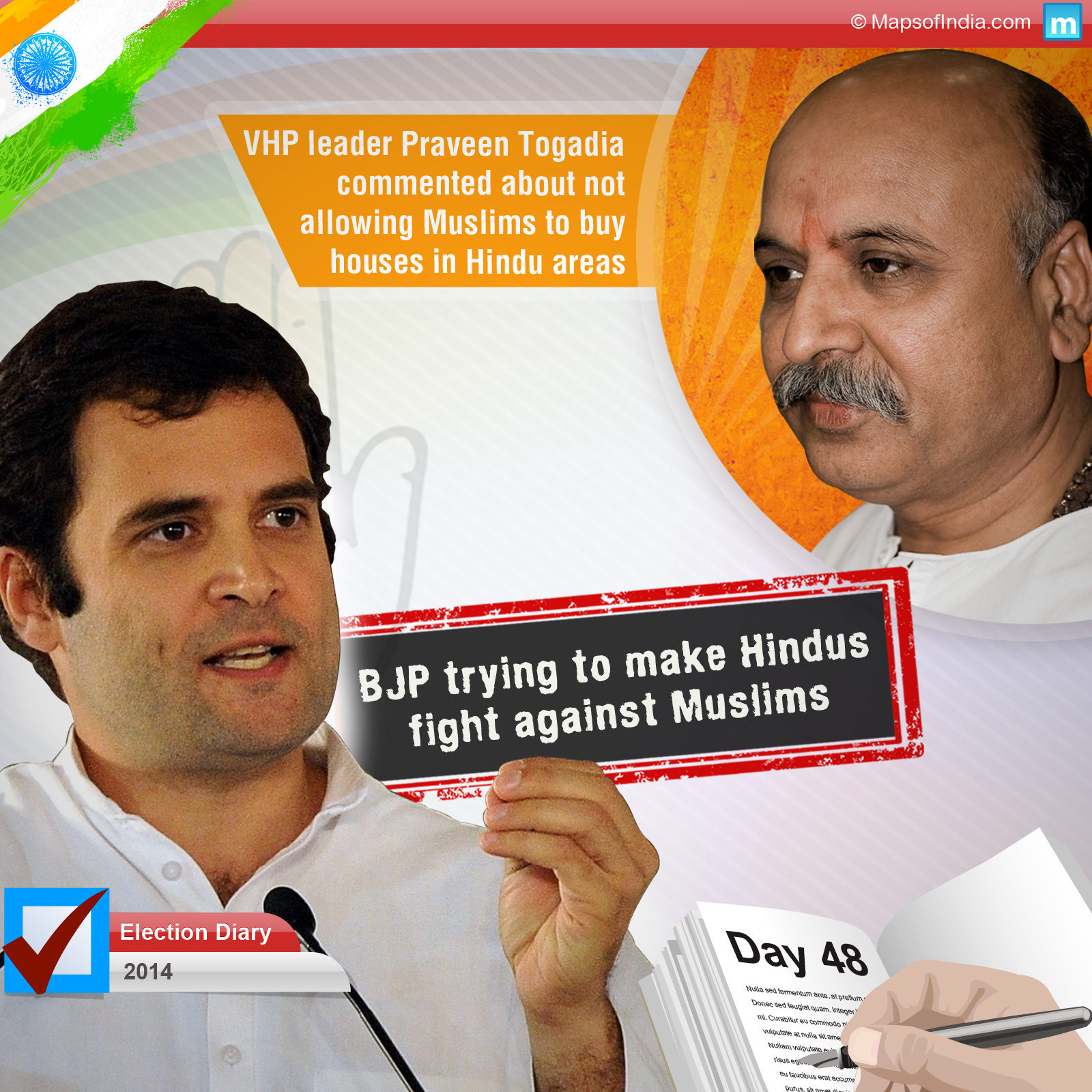
New Delhi pulled out all stops to welcome Tony Abbott, the Australian Prime Minister who became the first head of the government to visit the country since Narendra Modi-led government came into power in May. Significance of Abbott’s visit was that it paved the way for signing of the much awaited Indo-Australian civil nuclear agreement, which will allow uranium deficient India to fire its power reactors. In the world, Australia is the third-largest producer of uranium – for which talks kickstarted after Canberra lifted the ban on the sale of uranium to India. With this, analysts say, the acceptability of India for its nuclear programme, despite not signing the 1967 Nuclear Non-Proliferation Treaty (NPT), has received a further boost.
Notably, Australia is the 12th country with which India has nuclear energy agreements. So far, it imports uranium from only France, Russia and Kazakhstan. With the signing of agreement with Australia, India has added the fourth country in the list of nations selling uranium to it, thereby, pushing the country closer to its goal of increasing its nuclear capacity to 63,000 MW by 2032. But there is concern among strategic community about Canberra’s shifting nature. In 2008, under pressure from China, Australian Prime Minister Kevin Rudd had withdrawn from Quadrilateral Security Dialogue (QSD) between India, the US, Japan and Australia.
The dialogue, a brainchild of Japanese Prime Minister Shinzo Abe and initiated in 2007 stood in parallel with Malabar series of joint naval exercises. It was viewed by China as an attempt to encircle it and as such raised protests. Australia caved under Beijing’s pressure and subsequently, announced withdrawal from the QSD, leading to the dialogue’s premature death. A December 2008 cable written by US ambassador Robert McCallum and published by Wikileaks reveals that Rudd didn’t consult its partner, the US before leaving the QSD. Now under pressure from the US, Canberra has cancelled its uranium deal with Russia. To this shifting Australian attitude, though, Ministry of External Affairs Joint Secretary(south) Sanjay Bhattacharyya said nothing, but he underlined the importance of strategic partnership agreement that New Delhi signed with Canberra in 2009. “We wish to build to our relations further with Australia, as we do with many other countries. So we will continue to build and strengthen our partnership with Australia,” he said. Nonetheless, signing of nuclear deal is seen as a historic milestone in the two countries’ relationship. “It will support the country’s efforts to fuel its growth with clean energy and minimise the carbon footprint of its growth,” Prime Minister Narendra Modi said during the joint press conference with visiting Australian Prime Minister Tony Abbott.
Improving strategic relations
In a way, it is a tribute to leadership of the two countries which have worked so hard to realise the deal. But apart from the nuclear agreement, India and Australia signed three other agreements on water resources, sport, vocational education and training were also signed. In sports, India wants expertise and technology from Australia, a sporting powerhouse in setting up universities dedicated to games related activities. However, it has been readiness of the two nations to build up their strategic cooperation in the east and pacific region that they agreed to hold their first bilateral naval exercise in 2015. It should be noted that the 2009 India-Australia strategic agreement and the Joint Declaration on Security Cooperation that the two countries had issued five years ago, discuss about streamlining their joint efforts to maintain peace, stability and prosperity through closer cooperation on security challenges in the Asia-Pacific region. In order to push their strategic engagement further, the two sides decided to hold regular official level dialogue and coordination even at important forums like the Indian Ocean Region Association and East Asia Summit. This indicates the level of trust and mutual understanding the two nations share between them, despite the fact that incidents of attacks on Indian students in Australia have paled Indians’ perception towards the country. The number of Indian students has declined from 91,000 in 2010-11 to 36,000 now.
To attract Indian students back to Australian institutes, though, Canberra has taken several initiatives, but hesitation still prevails among Indian students. In contrast at the official level, the two governments have taken efforts to lift up their engagement at the educational level. Signing of an agreement on education between the two countries aims towards having a joint research and collaboration between universities. On its part, India has established a number of Chairs of Indian studies in Australian universities and more are in the offing. Australia too is not far behind. Recently, it committed US$1 million towards a Chair on environmental and ecological studies at the newly established Nalanda University. But it is trade and commerce front which gives a determined shovel to their relationship. And it was clear when the Australian Prime Minister, coming along with a 130-member business delegation, found it conspicuous to have a red carpet welcome for its investments in infrastructure and high technology areas.
Mutual trade growth expected
Indian investment in Australia too is high; total Indian investment in Australia is $11 billion; TCS, Infosys, Mahindra Aerospace and Adani’s have a significant presence in the Australian market. Notably India is Australia’s fifth-largest export partner, cornering 3.6 per cent of its total international export. The two-way trade has grown in volume from A$5.1 billion in 2003 to A$15.2 billion in 2013. By 2015, the two-way trade is expected to grow to A$40 billion.
Buzz in the corridors of power is that once Australia-India Comprehensive Economic Cooperation Agreement negotiations complete, this will broaden the base of merchandise trade and encourage the two-way trade by lowering tariff barriers, bringing regulatory transparency, reducing border restrictions on trade in goods and services and enhancing investment protections. Officials say surging Indian economy has an immense appetite for resources and Australia can fill this gap. “We both seek better market access for mutual benefit and to create an environment that is conducive to business and investment,” MEA joint secretary Sanjay Bhattacharya said. Nonetheless, it is the shift of gravity towards Asia, that has brought the India-Australia relations into focus. Both are members of several multilateral forums, including G-20. In November, Australia is holding the summit to be attended by Prime Minister Modi also.
Related Information:




